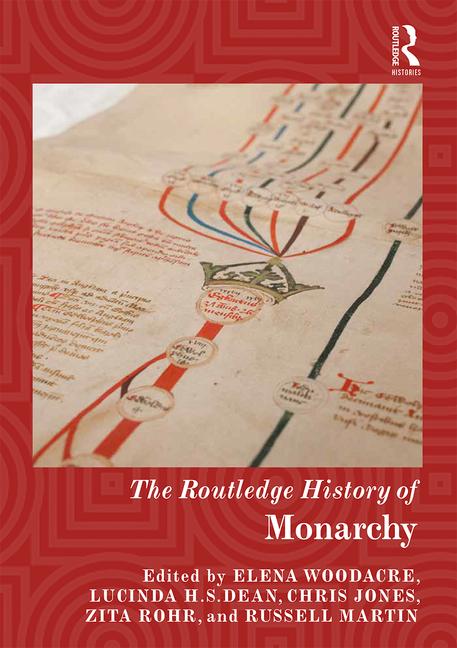
Home | Publications | Presentations | Teaching | Contact
Publications
Monographs
Edited Collections
Journal Articles
Book Chapters
Academic Reviews
Published Interviews, Blog Posts, and Other Publications
Monographs:
Norrie, Aidan, Elizabeth I and the Old Testament: Biblical Analogies and Providential Rule (Arc Humanities Press, 2023).
[Top]
Edited Collections:
London’s Past Today, ed. by Aidan Norrie and Robert Shoemaker. Special issue of The London Journal, 50.1 (2025).
Norman to Early Plantagenet Consorts: Power, Influence, and Dynasty, ed. by Aidan Norrie, Carolyn Harris, J. L. Laynesmith, Danna R. Messer, and Elena Woodacre (Palgrave Macmillan, 2023).
Later Plantagenet and Wars of the Roses Consorts: Power, Influence, and Dynasty, ed. by Aidan Norrie, Carolyn Harris, J. L. Laynesmith, Danna R. Messer, and Elena Woodacre (Palgrave Macmillan, 2023).
Hanoverian to Windsor Consorts: Power, Influence, Dynasty, ed. by Aidan Norrie, Carolyn Harris, J. L. Laynesmith, Danna R. Messer, and Elena Woodacre (Palgrave Macmillan, 2023).
Tudor and Stuart Consorts: Power, Influence, and Dynasty, ed. by Aidan Norrie, Carolyn Harris, J. L. Laynesmith, Danna R. Messer, and Elena Woodacre (Palgrave Macmillan, 2022).
Performing Royal Power in Premodern Europe, ed. by Aidan Norrie and Sophie Shorland. Special issue of Royal Studies Journal, 8.1 (2021).
[Open Access]
New Directions in Early Modern English Drama: Edges, Spaces, Intersections, ed. by Aidan Norrie and Mark Houlahan (De Gruyter / Medieval Institute Publications, 2020).
Playfulness in Shakespearean Adaptations, ed. by Marina Gerzic and Aidan Norrie (Routledge, 2020).
[View Preview]
Women on the Edge in Early Modern Europe, ed. by Lisa Hopkins and Aidan Norrie (Amsterdam University Press, 2019).
[View Preview]
From Medievalism to Early-Modernism: Adapting the English Past, ed. by Marina Gerzic and Aidan Norrie (Routledge, 2020)
[View Preview]
[Top]
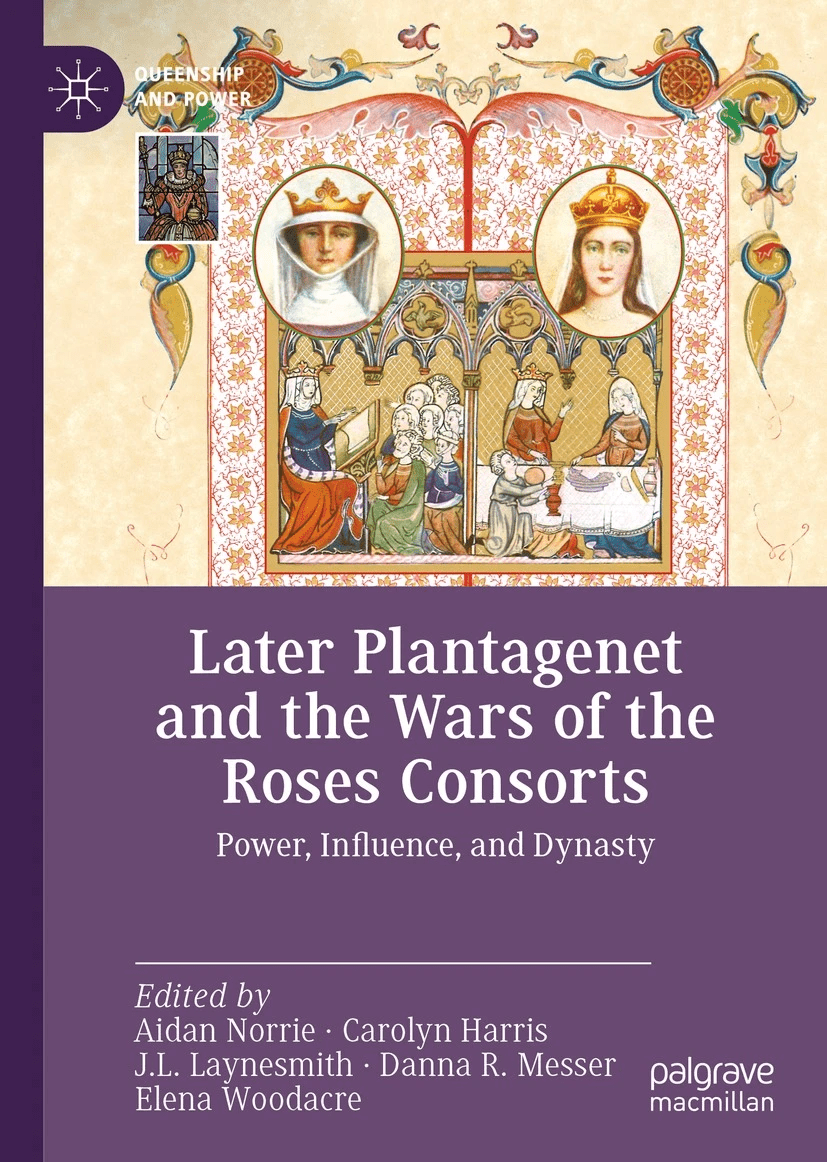 | This book examines the lives and tenures of the consorts of the Plantagenet dynasty during the later Middle Ages, encompassing two major conflicts—the Hundred Years’ War and the Wars of the Roses. The figures in this volume include well-known consorts such as the “She Wolves” Isabella of France and Margaret of Anjou, as well as queens who are often overlooked, such as Philippa of Hainault and Joan of Navarre. These innovative and authoritative biographies bring a fresh approach to the consorts of this period—challenging negative perceptions created by complex political circumstances and the narrow expectations of later writers, and demonstrating the breadth of possibilities in later medieval queenship. Their conclusions shed fresh light on both the politics of the day and the wider position of women in this age. This volume and its companions reveal the changing nature of English consortship from the Norman Conquest to today. Reviewed by Michelle Beer in Royal Studies Journal, 11.1 (2024):
Reviewed by Michele Seah in Parergon, 40.2 (2023): |
 | This book examines the lives and tenures of the consorts of the Hanoverian, Saxe-Coburg and Gotha, and Windsor monarchs from 1727 to the present. Some of the consorts examined in this volume—such as Queen Elizabeth, the Queen Mother, consort to George VI—are well known while others, including Adelaide of Saxe-Meiningen, consort to William IV, are more obscure. These innovative and authoritative biographies bring a fresh approach to the consorts of this period, revealing their lasting influence on the monarchy. In addition to covering a period that has seen the development of constitutional monarchy and increased media scrutiny of the whole royal family, this volume also looks to the future of the British monarchy, suggesting ways that future consorts can learn from the example of their predecessors. This volume and its companions reveal the changing nature of British consortship from the Norman Conquest to today. Reviewed by Amy-Jane Humphries in Royal Studies Journal, 11.1 (2024):
|
 | This book examines the lives and tenures of all the consorts of the Tudor and Stuart monarchs of England between 1485 and 1714, as well as the wives of the two Lords Protector during the Commonwealth. The figures in Tudor and Stuart Consorts are both incredibly familiar—especially the six wives of Henry VIII—and exceedingly unfamiliar, such as George of Denmark, the husband of Queen Anne. These innovative and authoritative biographies recognise the important role consorts played in a period before constitutional monarchy: in addition to correcting popular assumptions that are based on limited historical evidence, the chapters provide a fuller picture of the role of consort that goes beyond discussions of exceptionalism and subversion. This volume and its companions reveal the changing nature of English consortship from the Norman Conquest to today. Reviewed by Conor Byrne in Royal Studies Journal, 10.2 (2023): |
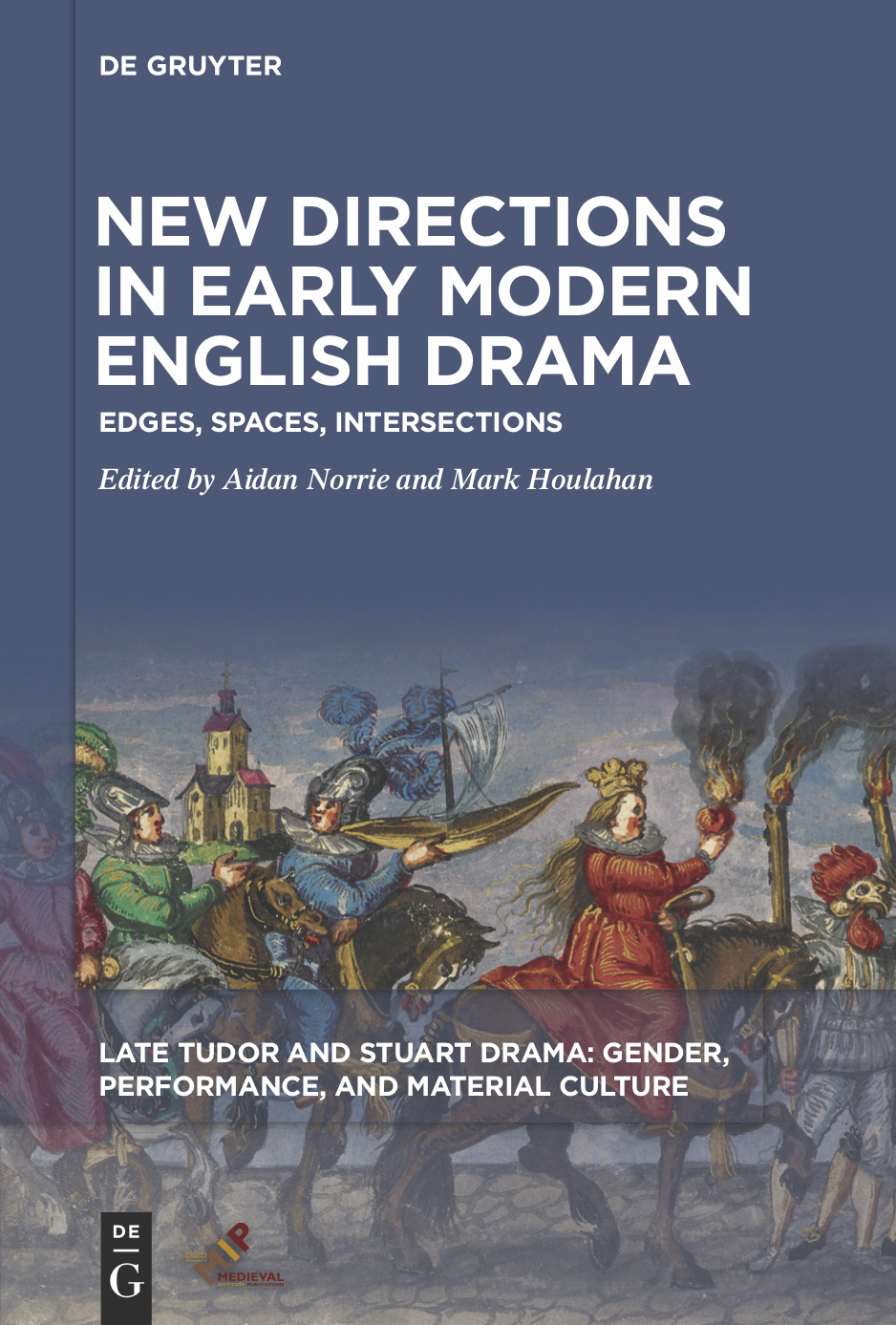 | This collection examines some of the people, places, and plays at the edge of early modern English drama. Recent scholarship has begun to think more critically about the edge, particularly in relation to the canon and canonicity. This book demonstrates that the people and concepts long seen as on the edge of early modern English drama made vital contributions both within the fictive worlds of early modern plays, and without, in the real worlds of playmakers, theaters, and audiences. The book engages with topics such as child actors, alterity, sexuality, foreignness, and locality to acknowledge and extend the rich sense of playmaking and all its ancillary activities that have emerged over the last decade. The essays by a global team of scholars bring to life people and practices that flourished on the edge, manifesting their importance to both early modern audiences, and to current readers and performers. Reviewed by Nathalie Rivère de Carles in
Renaissance Quarterly, 78.3 (2025): |
 | Four hundred years after William Shakespeare’s death, his works continue to not only fill playhouses around the world, but also be adapted in various forms for consumption in popular culture, including in film, television, comics and graphic novels, and digital media. Drawing on theories of play and adaptation, Playfulness in Shakespearean Adaptations demonstrates how the practices of Shakespearean adaptations are frequently products of playful, and sometimes irreverent, engagements that allow new ‘Shakespeares’ to emerge, revealing Shakespeare’s ongoing impact in popular culture. Significantly, this collection explores the role of play in the construction of meaning in Shakespearean adaptations—adaptations of both the works of Shakespeare, and of Shakespeare the man—and contributes to the growing scholarly interest in playfulness both past and present. The chapters in Playfulness in Shakespearean Adaptations engage with the diverse ways that play is used in Shakespearean adaptations on stage, screen, and page, examining how these adaptations draw out existing humour in Shakespeare’s works, the ways that play is used as a pedagogical aid to help explain complex language, themes, and emotions found in Shakespeare’s works, and more generally how play and playfulness can make Shakespeare ‘relatable,’ ‘relevant,’ and entertaining for successive generations of audiences and readers. Reviewed by Jennifer E. Nicholson in Parergon, 38.2 (2021): Reviewed by Kerreen Ely-Harper in The Australasian Journal of Popular Culture, 11.1&2 (2022): |
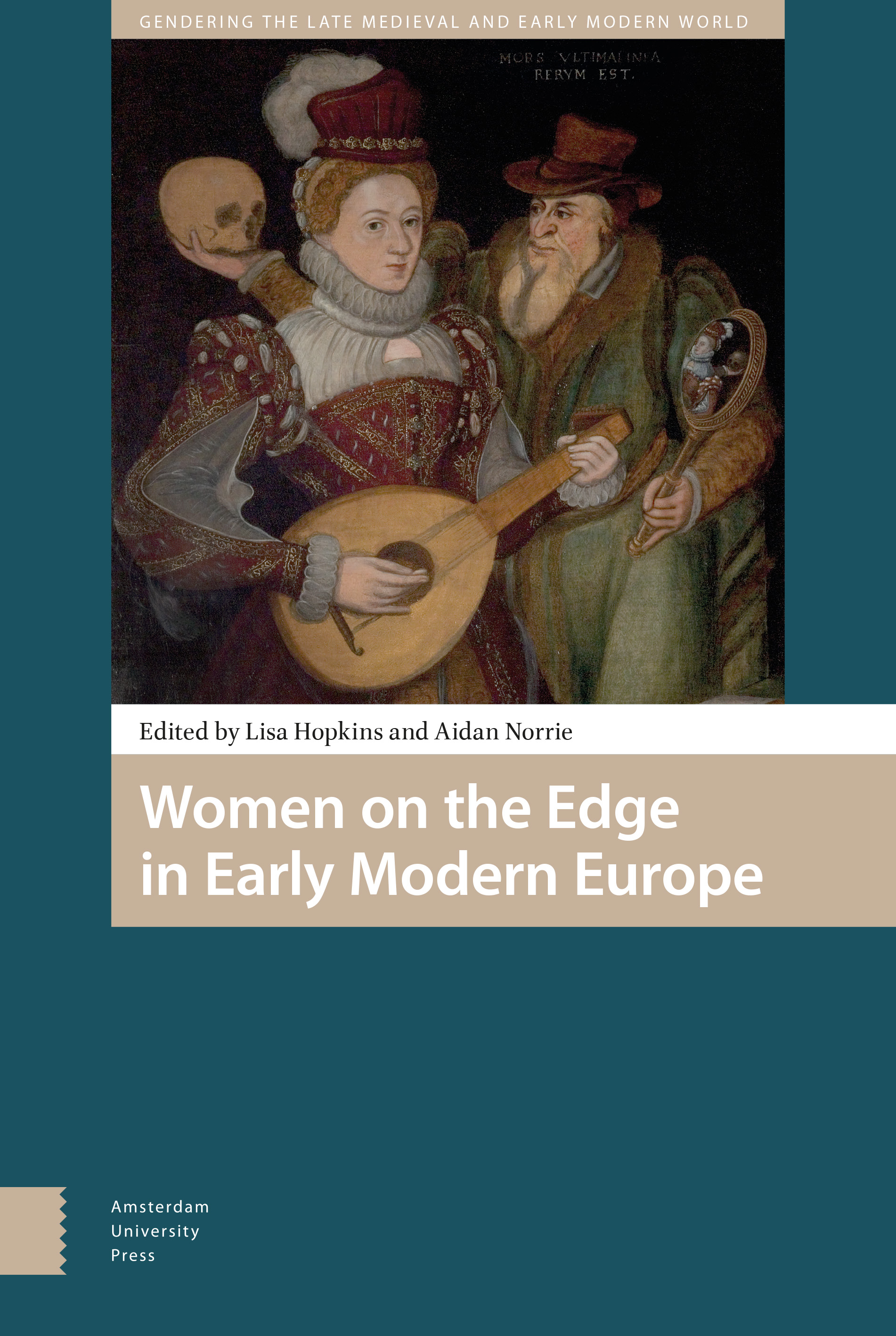 | Women on the Edge in Early Modern Europe examines the lives of women whose gender impeded the exercise of their personal, political, and religious agency, with an emphasis on the conflict that occurred when they crossed the edges society placed on their gender. Many of the women featured in this collection have only been afforded cursory scholarly focus, or the focus has been isolated to a specific, (in)famous event. This collection redresses this imbalance by providing comprehensive discussions of the women’s lives, placing the matter that makes them known to history within the context of their entire life. Focusing on women from different backgrounds—such as Marie Meurdrac, the French chemist; Anna Trapnel, the Fifth Monarchist and prophetess; and Cecilia of Sweden, princess, margravine, countess, and regent—this collection brings together a wide range of scholars from a variety of disciplines to bring attention to these previously overlooked women. Reviewed by Elisa Oh in Early Modern Women, 14.2 (Spring 2020): Reviewed by Jessica L. Malay in English Historical Review, 135.577 (December 2020): Reviewed by Britt Eyre-Mitchell in Journal for Early Modern Cultural Studies, 20.3 (Summer 2020): Reviewed by Lotte Fikkers in Journal of Early Modern History, 25.5 (October 2021): |
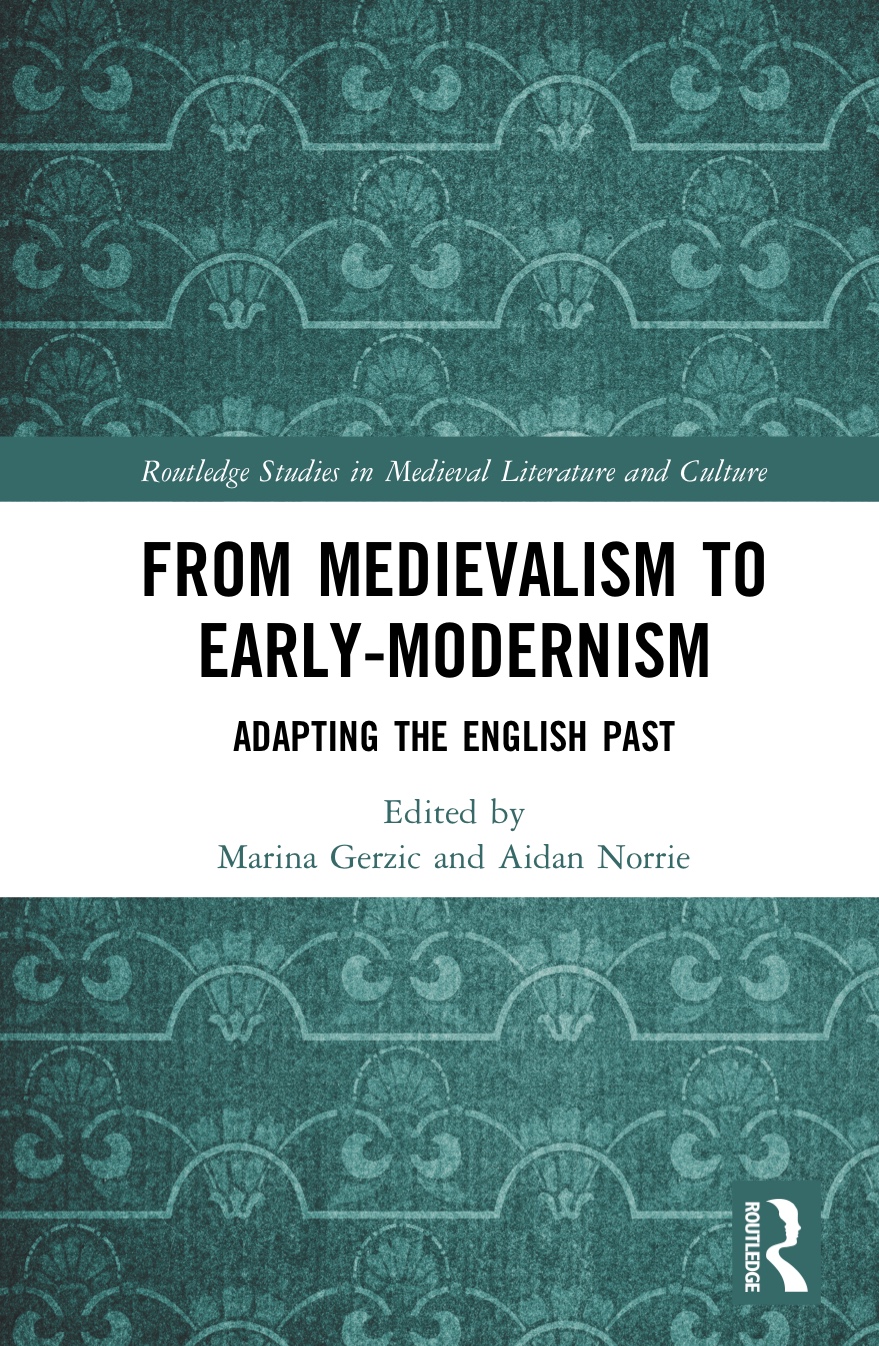 | From Medievalism to Early-Modernism: Adapting the English Past is a collection of essays that both analyses the historical and cultural medieval and early modern past, and engages with the medievalism and early-modernism—a new term introduced in this collection—present in contemporary popular culture. By focusing on often overlooked uses of the past in contemporary culture—such as the allusions to John Webster’s The Duchess of Malfi (1623) in J.K. Rowling’s Harry Potter books, and the impact of intertextual references and internet fandom on the BBC’s The Hollow Crown: The Wars of the Roses—the contributors illustrate how cinematic, televisual, artistic, and literary depictions of the historical and cultural past not only re-purpose the past in varying ways, but also build on a history of adaptations that audiences have come to know and expect. From Medievalism to Early-Modernism: Adapting the English Past analyses the way that the medieval and early modern periods are used in modern adaptations, and how these adaptations both reflect contemporary concerns, and engage with a history of intertextuality and intervisuality. Reviewed by Stephanie Russo in Parergon, 37.1 (2020): |
Journal Articles:
Norrie, Aidan, ‘Biblical Typology and Royal Power in Elizabethan Civic Entertainments’, Royal Studies Journal, 8.1 (2021), 54–78.
[Published Open Access]
Norrie, Aidan, and Sophie Shorland, ‘Introduction: Performing Royal Power in Premodern Europe’, Royal Studies Journal, 8.1 (2021), 1–8.
[Published Open Access]
Norrie, Aidan, ‘James Shirley’s The Cardinal and Archbishop Laud’, Notes and Queries, 67.3 (2020), 374–379.
[Publisher's Website]
Norrie, Aidan, ‘Kings’ Stomachs and Concrete Elephants: Gendering Elizabeth I through the Tilbury Speech’, Royal Studies Journal, 6.2 (2019), 183–203.
[Published Open Access]
Norrie, Aidan, ‘The Bishop and the Queen; Or, Why Did the Bishop of Carlisle Crown Elizabeth I?’, Northern History, 56.1–2 (2019), 25–45.
[Publisher's Website]
Norrie, Aidan, ‘Child Actors in the 1578 Norwich Civic Entertainment’, Shakespeare Bulletin, 37.2 (2019), 167–185.
[Publisher's Website]
Norrie, Aidan, ‘Elizabeth I and the “Proud Prelate”’, Notes and Queries, 65.4 (2018), 504–506.
[Publisher's Website]
Houlahan, Mark, and Aidan Norrie, ‘Shakespeare’s Antony and Cleopatra and Plutarch’s Life of Demetrius’, Notes and Queries, 65.4 (2018), 539–542.
[Publisher's Website]
Norrie, Aidan, ‘Elizabeth I as Judith: Reassessing the Apocryphal Widow’s Appearance in Elizabethan Royal Iconography’, Renaissance Studies, 31.5 (2017), 707–722.
[Publisher's Website]
Norrie, Aidan, ‘“Courageous, Zealous, Learned, Wise, and Chaste” – Queen Elizabeth I’s Biblical Analogies After Her Death’, Royal Studies Journal, 2.2 (2015), 25–44.
[Published Open Access]
[Top]
Book Chapters:
Norrie, Aidan, ‘Gay Pride and Marriage Equality in Xadia: Queer Lives in Netflix’s The Dragon Prince’, in Animated Queerness: LGBTQIA+ Representation in Children’s Animation, ed. by Sotiris Petridis (Bloomsbury, forthcoming).
Norrie, Aidan, ‘The Queen and the Cartographer: Constructing Heroes in Disney’s Atlantis Films’, in Explorers on Screen: Adventure! Danger! Romance!, ed. by Cynthia J. Miller and Sue Matheson (Edinburgh University Press, forthcoming).
Norrie, Aidan, ‘“I know you can do it, Aang, for you have done it before”: Reincarnation in the Avatar Universe’, in Theology in ‘Avatar: The Last Airbender’: Essays on Eastern Influences and Western Perspectives, ed. by Anthony G. Cirilla and Michael Riggins (McFarland, 2025), 243–258.
Norrie, Aidan, ‘Drama by Elizabeth I’, in The Palgrave Encyclopedia of Early Modern Women’s Writing, ed. by Patricia Pender and Rosalind Smith (Palgrave Macmillan, 2023).
[Chapter on Publisher's Website]
Norrie, Aidan, ‘Jane Seymour: Saintly Queen’, in Tudor and Stuart Consorts: Power, Influence, and Dynasty, ed. by Aidan Norrie, Carolyn Harris, J. L. Laynesmith, Danna R. Messer, and Elena Woodacre (Palgrave Macmillan, 2022), 79–100.
[Chapter on Publisher's Website]
Norrie, Aidan, and Joseph Massey, ‘The Tudor and Stuart Consorts: Power, Influence, Dynasty’, in Tudor and Stuart Consorts: Power, Influence, and Dynasty, ed. by Aidan Norrie, Carolyn Harris, J. L. Laynesmith, Danna R. Messer, and Elena Woodacre (Palgrave Macmillan, 2022), 1–9.
[Chapter on Publisher's Website]
Norrie, Aidan, ‘The Tudor Consorts: History and Memory’, in Tudor and Stuart Consorts: Power, Influence, and Dynasty, ed. by Aidan Norrie, Carolyn Harris, J. L. Laynesmith, Danna R. Messer, and Elena Woodacre (Palgrave Macmillan, 2022), 13–17.
[Chapter on Publisher's Website]
Norrie, Aidan, ‘What Mary Did First: Re-Assessing the Biblical Analogies of England’s First Female King’, in Mary I in Writing: Letters, Literature, and Representations, ed. by Jessica S. Hower and Valerie Schutte (Palgrave Macmillan, 2022), 111–133.
[Chapter on Publisher's Website]
Norrie, Aidan, ‘“Our Queen is Comming to the Town”: Child Actors and Counsel in the Elizabethan Progresses of 1574 and 1578’, in New Directions in Early Modern English Drama: Edges, Spaces, Intersections, ed. by Aidan Norrie and Mark Houlahan (De Gruyter / Medieval Institute Publications, 2020), 97–116.
[Chapter on Publisher's Website]
Norrie, Aidan, and Mark Houlahan, ‘Introduction: Edges, Spaces, and Intersections in Early Modern English Drama’, in New Directions in Early Modern English Drama: Edges, Spaces, Intersections, ed. by Aidan Norrie and Mark Houlahan (De Gruyter / Medieval Institute Publications, 2020), 1–15.
Norrie, Aidan, ‘William Shakespeare and Elizabeth I: The Special Relationship?, in Playfulness in Shakespearean Adaptations, ed. by Marina Gerzic and Aidan Norrie (Routledge, 2020), 178–200.
[Chapter on Publisher's Website]
Gerzic, Marina, and Aidan Norrie, ‘“Did Shakespeare Really Write This Racy Stuff?”: Playfulness in Shakespearean Adaptations’, in Playfulness in Shakespearean Adaptations, ed. by Marina Gerzic and Aidan Norrie (Routledge, 2020), 1–16.
Norrie, Aidan, ‘Female Pharaohs in Ancient Egypt’, in The Routledge History of Monarchy, ed. by Elena Woodacre, Lucinda H. S. Dean, Chris Jones, Russell Martin, and Zita Eva Rohr (Routledge, 2019), 501–517.
[Chapter on Publisher's Website]
Norrie, Aidan, and Lisa Hopkins, ‘Introduction: Early Modern European Women and the Edge’, in Women on the Edge in Early Modern Europe, ed. by Lisa Hopkins and Aidan Norrie (Amsterdam University Press, 2019), 15–25.
Norrie, Aidan, ‘Cecilia of Sweden: Princess, Margravine, Countess, Regent’, in Women on the Edge in Early Modern Europe, ed. by Lisa Hopkins and Aidan Norrie (Amsterdam University Press, 2019), 179–202.
Gerzic, Marina, and Aidan Norrie, ‘Introduction: Medievalism and Early-Modernism in Adaptations of the English Past’, in From Medievalism to Early-Modernism: Adapting the English Past, ed. by Marina Gerzic and Aidan Norrie (Routledge, 2019), 1–17.
Norrie, Aidan, ‘The Queen, the Bishop, the Virgin, and the Cross: Catholicism versus Protestantism in Elizabeth’, in From Medievalism to Early-Modernism: Adapting the English Past, ed. by Marina Gerzic and Aidan Norrie (Routledge, 2019), 226–243.
Norrie, Aidan, ‘Female Rangatira in Aotearoa New Zealand’, in A Companion to Global Queenship, ed. by Elena Woodacre (Arc Humanities Press, 2018), 109–121.
Norrie, Aidan, ‘A Man? A Woman? A Lesbian? A Whore?: Queen Elizabeth I and the Cinematic Subversion of Gender’, in Premodern Rulers and Postmodern Viewers: Gender, Sex, and Power in Popular Culture, ed. by Janice North, Karl C. Alvestad, and Elena Woodacre (Palgrave Macmillan, 2018), 319–340.
[Chapter on Publisher's Website]
[Top]
Academic Reviews:
Norrie, Aidan, review of The Reputation of Edward II, 1305–1697: A Literary Transformation of History, by Kit Heyam, Journal of Marlowe Studies, 5 (2025), 192–194.
[Published Open Access]
Norrie, Aidan, review of Household Goods and Good Households in Late Medieval London: Consumption and Domesticity After the Plague, by Katherine L. French, The London Journal, 48.2 (2023), 188–190.
[Read Here]
Norrie, Aidan, review of The Wedding of Charles I and Henrietta Maria, 1625: Celebrations and Controversy, edited by Marie-Claude Canova-Green and Sara J. Wolfson, Renaissance Studies, 36.4 (2022), 623–625.
[Read Here]
Norrie, Aidan, review of The Image of Elizabeth I in Early Modern Spain, edited by Eduardo Olid Guerrero and Esther Fernández, Royal Studies Journal, 8.2 (2021), 240–242.
[Published Open Access]
Norrie, Aidan, review of Forgotten Queens in Medieval and Early Modern Europe: Political Agency, Myth-Making, and Patronage, edited by Valerie Schutte and Estelle Paranque, Parergon, 37.2 (2020), 246–248.
[Read Here]
Norrie, Aidan, review of Early Modern Catholics, Royalists, and Cosmopolitans: English Transnationalism and the Christian Commonwealth, by Brian C. Lockey. Parergon, 36.2 (2019), 259–260.
[Read Here]
Norrie, Aidan, review of Unexpected Heirs in Early Modern Europe: Potential Kings and Queens, edited by Valerie Schutte, Royal Studies Journal, 6.1 (2019), 129–132.
[Published Open Access] [Review on Publisher's website]
Norrie, Aidan, review of Baptist Women's Writings in Revolutionary Culture, 1640-1680, by Rachel Adcock, Parergon, 35.2 (2018), 243.
[Read Here]
Norrie, Aidan, review of Cromwell: The Protector, by David Horspool, Royal Studies Journal, 5.2 (2018), 175–177.
[Published Open Access]
Norrie, Aidan, review of The Politics of Counsel in England and Scotland, 1286-1707, edited by Jacqueline Rose, Parergon, 35.1 (2018), 201–203.
[Read Here] [Review on Publisher's website]
Norrie, Aidan, review of Anna of Denmark and Henrietta Maria: Virgins, Witches, and Catholic Queens, by Susan Dunn-Hensley, Reviews in History (2018), doi:10.14296/RiH/2014/2253.
[Published Open Access]
Norrie, Aidan, review of Elizabeth I's Italian Letters, edited and translated by Carlo M. Bajetta, Royal Studies Journal, 5.1 (2018), 206–208.
[Published Open Access] [Review on Publisher's website]
Norrie, Aidan, review of History, Fiction, and "The Tudors": Sex, Politics, Power, and Artistic License in the Showtime Television Series, edited by William B. Robison, Royal Studies Journal, 4.2 (2017), 258–262.
[Published Open Access]
Norrie, Aidan, review of Royal Mothers and Their Ruling Children: Wielding Political Authority from Antiquity to the Early Modern Era, edited by Elena Woodacre and Carey Fleiner, Parergon, 33.2 (2016), 178–180.
[Read Here] [Review on Publisher's website]
Norrie, Aidan, review of Bishops and Power in Early Modern England, by Marcus K. Harmes, Parergon, 33.2 (2016), 187.
[Read Here]
Norrie, Aidan, review of Boudica's Odyssey in Early Modern England, by Samantha Frénée-Hutchins, Parergon, 33.1 (2016), 266–267.
[Read Here] [Review on Publisher's website]
Norrie, Aidan, review of Reformation Unbound: Protestant Visions of Reform in England, 1525-1590, by Karl Gunther, Parergon, 33.1 (2016), 268–269.
[Read Here]
Norrie, Aidan, review of Supernatural and Secular Power in Early Modern England, edited by Marcus Harmes and Victoria Bladen, Parergon, 32.2 (2015), 348–350.
[Read Here]
Norrie, Aidan, review of Renaissance Drama on the Edge, by Lisa Hopkins, Parergon, 32.2 (2015), 384–385.
[Read Here]
Norrie, Aidan, review of Public Religious Disputation in England, 1558-1626, by Joshua Rodda, Parergon, 32.2 (2015), 299–300.
[Read Here]
[Top]
Published Interviews, Blog Posts, and Other Publications:
Norrie, Aidan, ‘London’s Past into the Future’, The London Journal, 50.1 (2025), 189–193.
[Read Here]
Podcast Episode: ‘Six Wives: Jane Seymour’
[Listen Here]
‘Aidan Norrie on Elizabeth I and the Old Testament’: A blog post celebrating the first anniversary of my monograph.
[Read Here]
Podcast Episode: ‘On Progress with Elizabeth I: Norwich 1578’
[Details Here]
Blog post: ‘Celebrating the Accession Day of Elizabeth I of England, 1558 and Beyond’
[Link Here]
Podcast Episode: ‘Queen Elizabeth on Progress’
[Listen Here]
‘Source Immersion’: A blog post about my research trip to the Newberry Library, Chicago.
[Link Here]
Interview for the Royal Studies Journal blog.
[Read Here]

